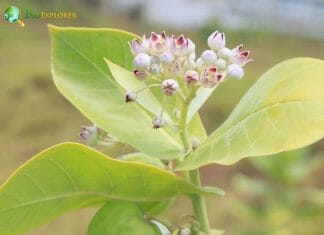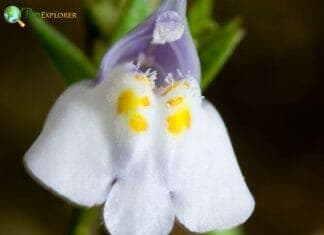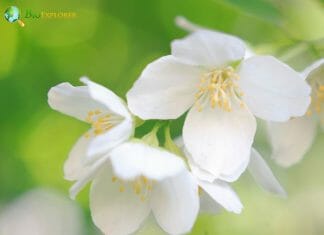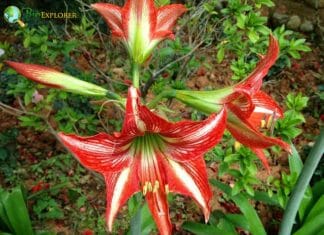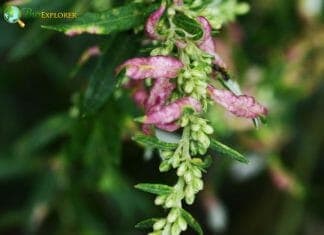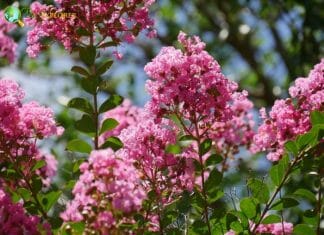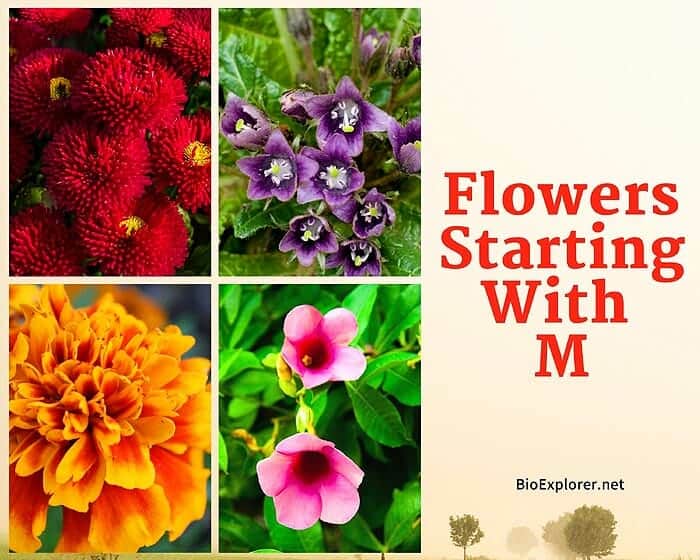
Magnolias are excellent landscaping and attractive ornamentals for any garden. They come in many different varieties, bloom across a wide range of colors and textures, require minimal care, and tolerate a variety of climates.
Besides Magnolias, there are many other flowers are starting with M in the floral world.
Flowers Starting with M
Here is the list of flowering species starting with the letter M.
Magnolia
Magnolia is an eye-catching flowering plant that belongs to the Magnoliaceae (magnolia) family. There are about 210 species of magnolia, differing in shape, size, flower color, and habitat type. Magnolias are deciduous, evergreen, or spreading shrubs or trees characterized by large, fragrant flowers that can be cup- or star-shaped, in hues of yellow, green, purple, pink, or white.
Maiden Pink
With its natural beauty, the Maiden Pink (Dianthus deltoides) conquers heather and stone gardens. It belongs to the Caryophyllaceae (carnation) family and is widespread in Asia and Europe. Each radially symmetrical flower consists of 5 toothed petals approximately 1 centimeter long, magenta-red to pink in color.
Mallow
Flower Type: Biennials
Mallow belongs to the large family of Malvaceae plants, which includes hibiscus, okra, and cotton. The flowers are single or in clusters in the leaf axils, which bloom from early summer to late autumn. They have five petals and are lilac, pinkish, or white flowers with an average width of 1 to 1.5 cm.
Mamane
Flower Type: Shrubs/Trees
Sophora chrysophylla, also known as mamane, is a species of flowering plant in the Fabaceae (bean and pea) family native to Hawaii. There are around 50 species in the Sophora genus, with mamane being the only representative on the Islands of Hawai. The yellow flowers are produced in spring and winter.
Manchineel
The Manchineel tree (Hippomane mancinella) is a species of the family of the Euphorbiaceae family. Its distribution area extends from northern South America to the tropical south of North America. The Manchineel trees produce tiny greenish-yellow blossoms that appear in spikes.
Mandevilla
As a classic tropical vine, the mandevilla (Mandevilla sanderi) is an excellent way to add a touch of color to a sunny vertical space in any garden. Mandevillas are also known for their large, tropical-looking flowers. They are available in shades of white, red, and pink and several shades in between.
Mandrake
Flower Type: Perennials
Also known as Satan's apple, long missing from American pleasure gardens, mandrake (Mandragora officinarum) is staging a comeback, thanks to Harry Potter films and books. The solitary flowers have a bell-shaped crown of 5 petals, and they vary from purple to green-yellow. The flowers bloom in the center of the plant in spring.
Maple
Maple is the common name for all members of the Acer flower genus, a group of around 132 primarily deciduous tree and shrub species. Most maples originate from Asia, but some species are also found in Europe, North Africa, and North America. Typically, Maple flowers are red, orange, green, or yellow.
Marguerite Daisy
Flower Type: Perennials
For an eye-catching show in cooler weather, plant the Marguerite daisy (Argyranthemum frutescens). Sometimes confused with Shasta daisies, the daisy is quite shrubby and mounded. The deeply incised dark green foliage is aromatic when pressed. White, yellow, and pink varieties are available, some with blue-green foliage and/or double flowers.
Marigold
Flower Type: Annuals
Marigold (Calendula officinalis) is used as an herbal remedy for skin conditions or to treat wounds. But as an ornamental plant today, it is cultivated in numerous gardens. They rest on the hairy, almost square, felted stems that alternately bear the leaves. Especially characteristic is the yellow to orange daisy flowers, which can reach a height of up to 2 inches (5 cm) in diameter.
Marjoram
Flower Type: Perennials
Also known as sweet marjoram, Marjoram (Origanum majorana), is a perennial plant from the Lamiaceae (mint) family that is cultivated as a culinary herb. The Origanum genus is currently assigned to around 40 species. The small marjoram flowers are predominantly white to scarlet red in color.
Marsh Gladiolus
Flower Type: Perennials
Gladiolus palustris is a perennial herb of the Iridaceae family and is native to Central and NW Europe. This species can grow to a height of 12-24 inches. The genus Gladiolus is a Latin word that means "a sword". The specific name palustris is a Latin word that means "growing in marshes" the plant's environment.
Marshmallow
Flower Type: Perennials
Althaea officinalis, the marshmallow or marsh mallow, is a flowering species of plant native to North Africa, Western Asia, and Europe. True marshmallow flowers appear in clusters in the leaf axils from July to September. They are 1.2 to 2 in (3 to 5 cm) tall. The flowers are white to pale pink, with 6 to 9 outer sepals that are slightly scented.
Matsumoto
Flower Type: Annuals
The Matsumoto aster (aka Japanese Aster), part of the Chinese aster series, is native to East Asia and is a much sought-after and admired flower. The Matsumoto aster flaunts its always yellow inner flowers by surrounding them with red, purple, lavender, pink, or white flowers, to name a few.
Mazus
Flower Type: Perennials
Mazus, a slow-growing perennial with delicate blue-violet flowers, is an excellent ground cover thanks to the creeping stalks. In warm winter weather, the foliage is evergreen. Small purplish-blue, tubular, two-lipped flowers with white and yellow markings appear in small clumps from late spring to early summer.
Meadowsweet
Flower Type: Perennials
Meadowsweet (Filipendula ulmaria) was well-known to druids and healers in ancient times. The ancient Teutons used this herb to flavor their famous mead (honey/met). The cream or white flowers are arranged in an umbel shape and usually comprise 5 to 6 petals. What is striking is the flowers' sweet and strong aroma, which becomes more intense on hot nights.
Melaleuca
Melaleuca is a genus of almost 300 plant species in the myrtle (Myrtaceae) family, commonly known as tea tree, honey myrtle, or paper bark. These common names refer to many species' scaly bark and the nectar produced in their flowers. The flower color varies from pink to white, red, green, or pale yellow.
Mezereon
Mezereon (Daphne mezereum), commonly known as the February Daphne for its late winter flowering, is a small, semi-evergreen, deciduous shrub with an upright, bushy growth habit that usually grows 3 to 5 feet tall and wide. The fragrant pink to reddish-purple flowers (up to 1/2" wide each) bloom in stemless clusters (2 to 4 flowers per cluster).
Miconia
Flower Type: Trees
Miconia calvescens, also known as miconia, bush currant, or the velvet tree, is a plant species in the Melastomataceae family. The genus contains around 4 species, with Miconia calvescens being the most well-known of the four. The flower heads are large panicles with white to pale pink flowers.
Milkwort
Flower Type: Perennials
Milkwort (Polygala vulgaris) might not have the most endearing name. Still, it's one of the stars of the early-fall summer show in Europe. The flowers are usually dark blue to light blue, but they can also be pink, purple, and white. The flowers have small petals surrounded by a pair of flat-top sepals that look like petals.
Ming fern
Flower Type: Perennials
Ming fern (Asparagus retrofractus), also known as a zigzag shrub, pom-pom asparagus fern, and Ming asparagus fern, is an evergreen herbaceous perennial shrub that generally grows 6 to 8 feet tall. The small, scented white flowers with 6 petals in open axillary umbels bloom from spring to early summer.
Miniature Gladiolus
Flower Type: Perennials
Miniature Gladiolus (Gladiolus nanus) is sometimes referred to as dwarf Gladiolus. It is actually a smaller growing variety than the more popular varieties. Miniature Gladiolus produces fantastic two-tone spikes of pink flowers with a hint of white on its throat.
Mistletoe
Flower Type: Perennials
A mistletoe is a large group of plants that parasitize the above-ground parts of shrubs and trees. Mistletoe is a perennial flowering plant with specialized roots that can penetrate the host plant, from where it receives nutrients and water. The oak mistletoe revered by the Germans and Celts is the Viscum album (European Mistletoe), which produces yellow flowers and sticky white berries.
Misty Blue Limonium
As a member of the family Plumbaginaceae, Limonium has more than 120 species of flowering plants. The two main groups of this genus comprise hybrids of Limonium latifolium and Limonium sinuatum. Misty Blue Limonium is a variety of Latifolium with blue flowers. Its hairy, branched stems usually reach 12 to 18 inches tall and are topped with racemes of small, papery florets.
Mock Orange
One of the most beautiful but notably underused natives of early summer/late spring is the Mock Orange, Philadelphus lewisii. The flower gets its common name from the delicious orange scent that makes it alluring to humans and bees. Blooming for several weeks from late May/early June, the branches are covered in many snow-white flowers consisting mainly of four light yellow petals in the middle.
Montbretia
Flower Type: Perennials
Extremely attractive and exotic in appearance, Montbretia produces decorative clusters of upright, sword-shaped leaves and glowing sticks of yellow, orange, red, and scarlet tubular flowers that bloom for 5 to 8 weeks from mid-summer to mid-fall. Most Montbretia flowers are arranged in an intricate panicle.
Monte Cassino
Flower Type: Annuals/Perennials
Loved by butterflies, gardening enthusiasts, and florists, this remarkable flower Monte Cassino spotlights delicate clear white clouds of dainty daisies with a yellow center that hovers over neatly trimmed small green leaves that form a sturdy, bushy clump. The florets on the central disc are generally yellow, surrounded by thong-shaped ligulate florets in white, purple, blue, or pink shades.
Moonflower
Flower Type: Perennials
Nature is practical and alive throughout the day. Moonflowers (Ipomoea alba) are nocturnal flowers and are best enjoyed by night owls and nightwalkers. The leaves are whole or 3-lobed, 5 to 15 cm long, with a stem 5 to 20 cm long. The fragrant flowers are pink or white and large, 8 to 14 cm in diameter.
Mother-in-law Tongue
Flower Type: Perennials
The Mother-in-law Tongue is an evergreen, perennial plant with elongated and dense leaves. These unique leaves are dark green with light gray-green crossed bands and can grow up to 2.4 inches wide and 3 feet tall. It has small, light green flowers that bloom in summer or fall.
Motherwort
Flower Type: Perennials
Motherwort (Leonurus cariaca) quickly attracts attention with its characteristic leaves and flowers. During the flowering period, which typically occurs between mid-June and early September, the motherwort forms typical blooms with a dainty purple to pink color.
Mount Finke Grevillea
Flower Type: Shrubs
Grevillea treueriana is a small shrub from order Proteales. The Mount Finke Grevillea plants are endemic to Mount Finke of Australia and can grow to a height of 2 meters. The flowers of the Grevillea treueriana are shaped like a toothbrush.
Mugwort
Flower Type: Perennials
Common mugwort, Artemisia vulgaris, is a species in the Asteraceae (sunflower) family. It is one of many species (2-400) in the Artemisia genus, commonly referred to as mugwort. The relatively small florets (5 mm long) are radially symmetrical with numerous dark red or yellow petals.
Mulla Mulla
Flower Type: Annuals
Ptilotus exaltatus is an annual herb endemic to Australia. This plant is a member of the order Caryophyllales. Ptilotus has about 100 species. All of the species, except 1, are endemic to Australia. For example, the beautiful colored flowered P. exaltatus is native to Australia.
Mums
Mums are available in various flower colors, including red, orange, pink, yellow, white, salmon, cream, burgundy, and bi-colors. Mums are the Chrysanthemum genus flowering plants in the Asteraceae family, native to northeastern Europe and eastern Asia. There are 40 known species and thousands of cultivars of chrysanthemums.
Cite This Page
APA7MLA8Chicago
BioExplorer.net. (2024, December 21). Flowers Starting with M. Bio Explorer. https://www.bioexplorer.net/plants/flowers/m/.
BioExplorer.net. "Flowers Starting with M" Bio Explorer, 21 December 2024, https://www.bioexplorer.net/plants/flowers/m/.
BioExplorer.net. "Flowers Starting with M" Bio Explorer, December 21 2024. https://www.bioexplorer.net/plants/flowers/m/.







